Hannipsoban (한입소반): One with Everything
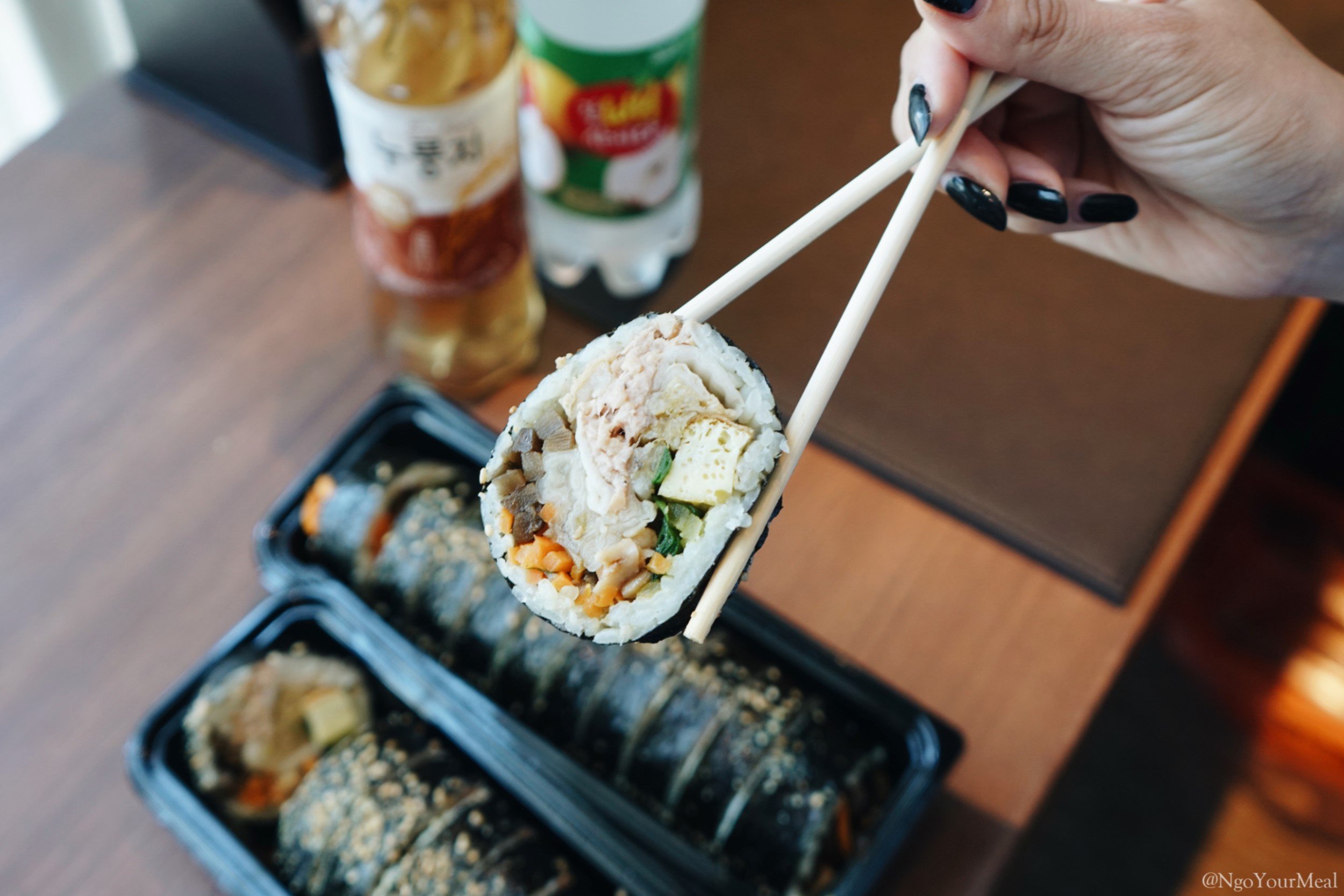

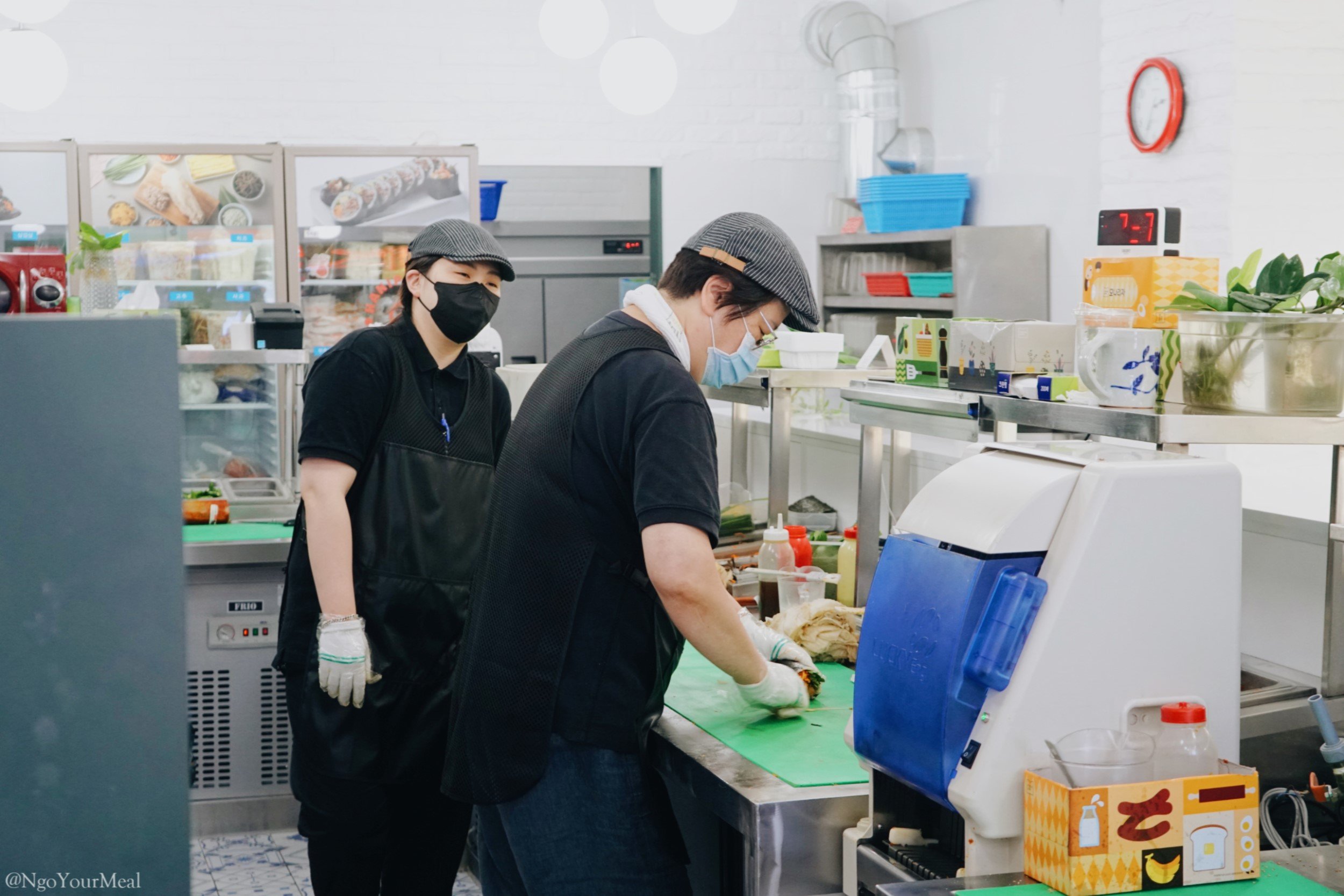
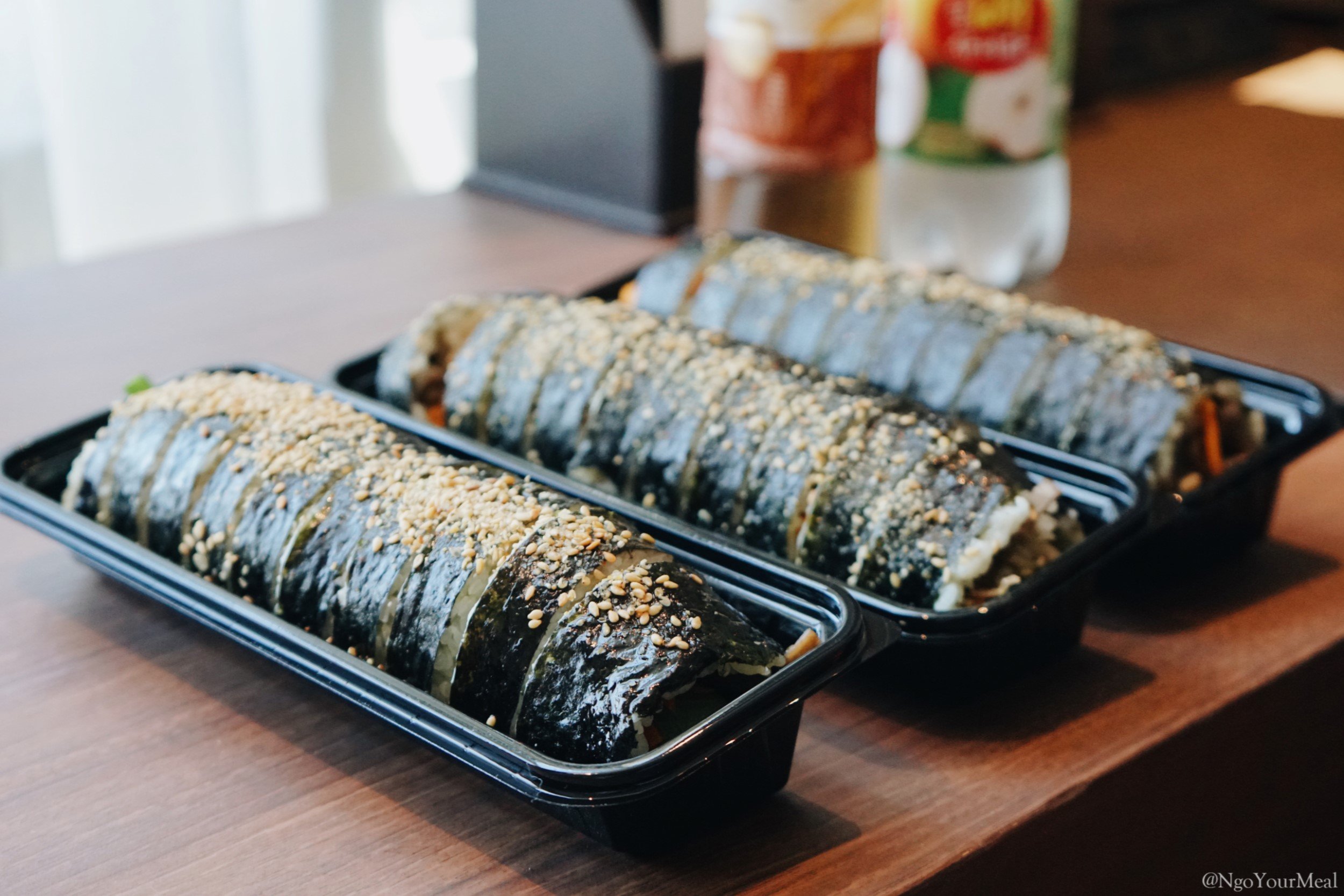
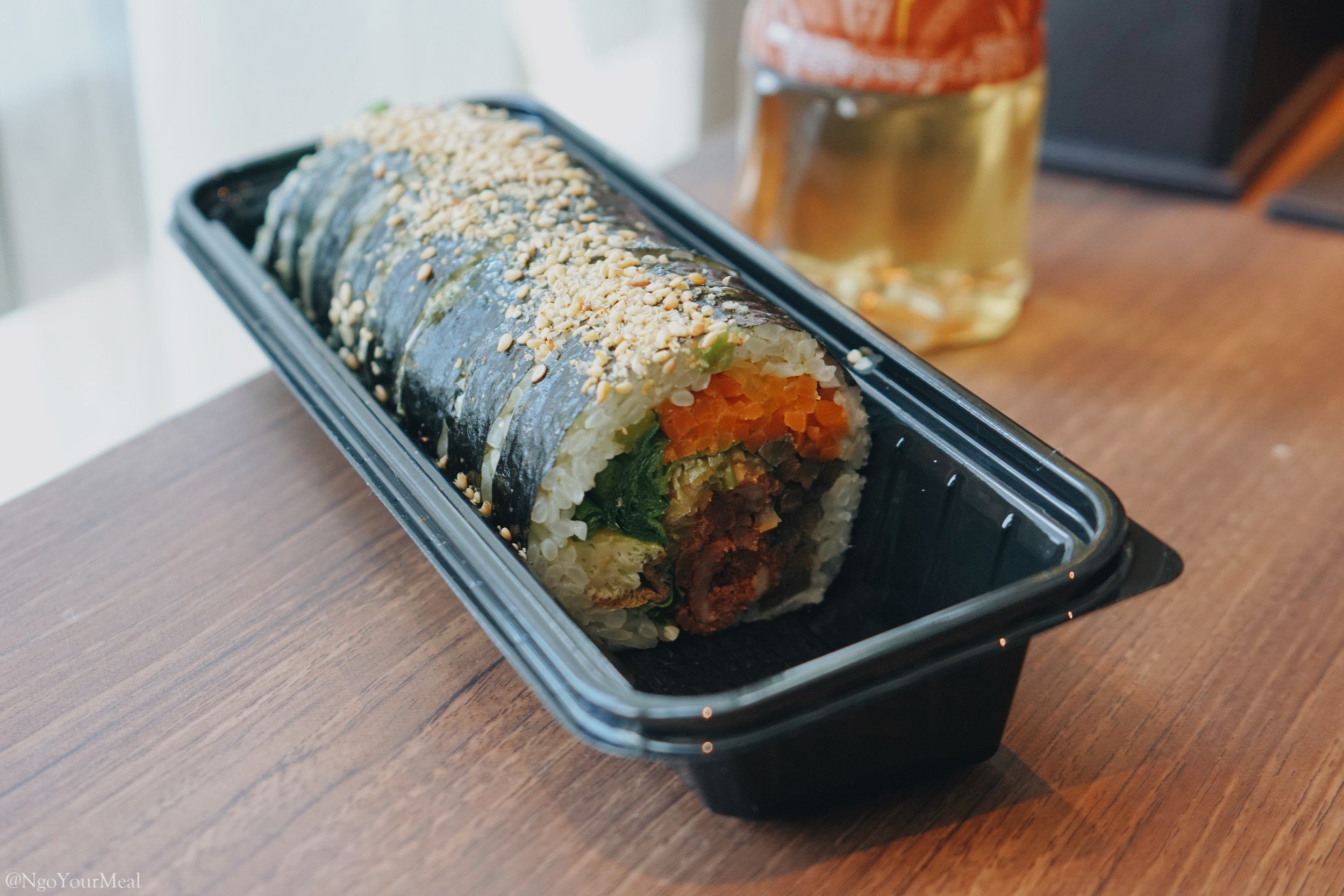
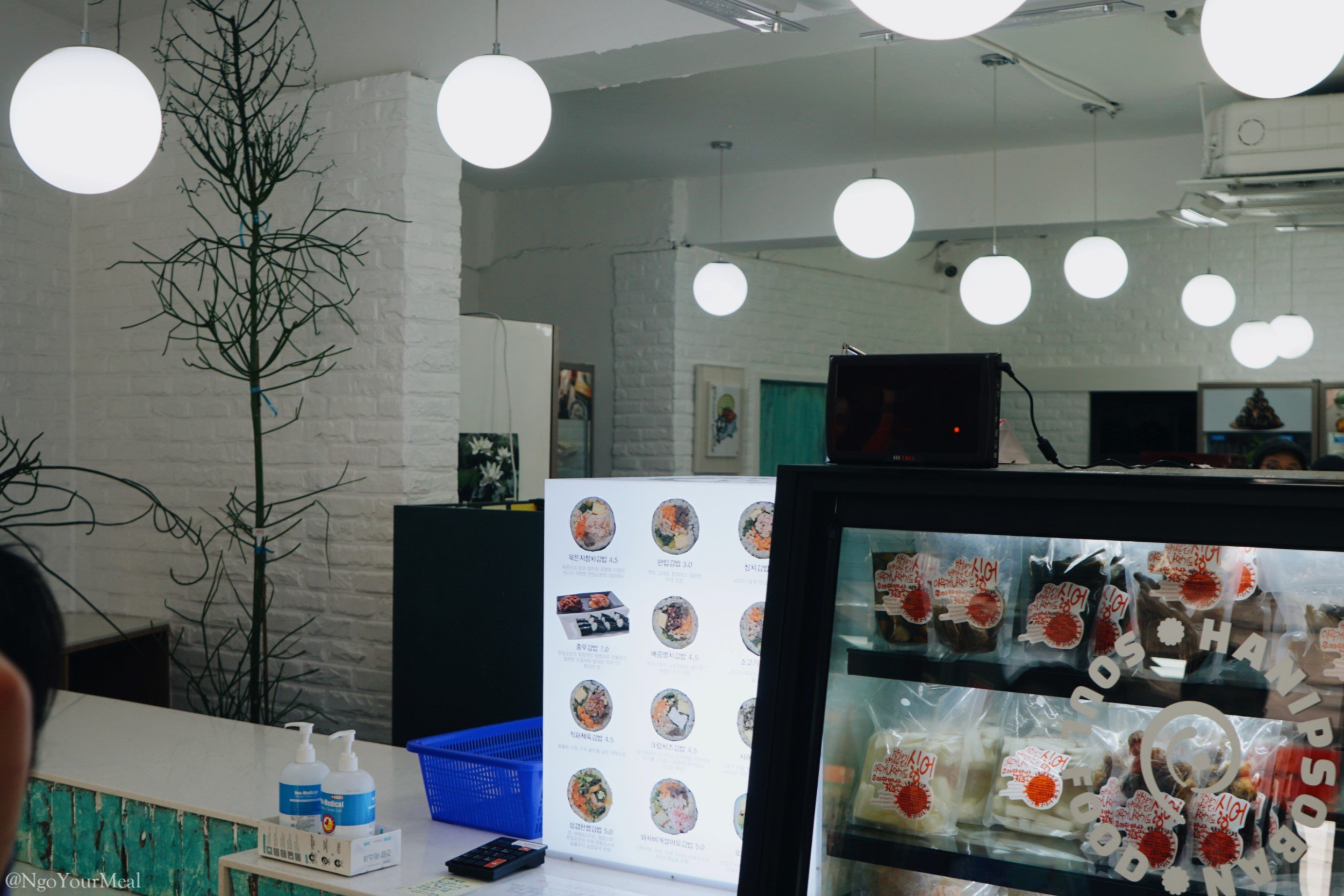
When Annie and I travel, we make it a priority to search for the most interesting purveyors of local foods. Kimbap is no exception. All the credit on this one goes to Annie though. She really spent a lot of time looking through websites and blogs to find the most promising kimbap restaurant in Seoul. In the end, she chose Hannipsoban (한입소반).
Kimbap (김밥) is a traditional Korean dish made with cooked rice and a variety of ingredients that may include vegetables, fish, and/or meats, which are then rolled in dried seaweed and sliced into bite-sized pieces. It’s often eaten as a snack thanks to its portability but it can also be enjoyed as a small meal.
Hannipsoban is more of a store rather than a full-scale restaurant. Orders are taken at a self-service kiosk and then packaged to-go. Hannipsoban has several types of kimbap options depending on the type of filling you prefer.
After careful deliberation, Annie and I settled for the Fermented Kimchi and Tuna Kimbap (묵은지참치김밥) and the Jeyuk Pork Kimbap (직화제육김밥). After several minutes, our order was ready. We stopped by a convenience store for some soft drinks then went back to the hotel to enjoy our lunch.
I won’t lie. I’ve had kimbap several times before and I didn’t find it very intriguing. But, on my trip to Korea, I was definitely interested in trying an authentic one. I knew it would be much better than the ones I’ve had in NY but what I experienced was something completely different.
From the moment I picked up that beautiful mosaic of flavor, I was entranced. All the ingredients were firmly but carefully hugged by a thin sheet of dried seaweed. Fearful that a smaller bite would cause the fragile kimbap to fall apart, I decided to eat it whole. Conveniently, each piece was already a curated serving of a well-balanced meal. Unlike the ones I’ve had in the past, Hannipsoban’s kimbap was generously portioned with more ingredients and less rice. Of course, the ingredients tasted fresh, authentic, and a lot less muted. I finally saw kimbap from a new perspective and I couldn’t stop shoveling pieces into my mouth.
At Hannipsoban, most of the kimbap options cost about 5,000 WON, which comes out to a little over $4 USD. I know it’s just a simple snack but the value is really incredible to me. There’s no doubt I’m going to eat more kimbap the next time I visit Korea.
Note to self and to everyone else: Leftover kimbap can be served a second time by soaking each piece in beaten egg then pan-frying them until golden brown.
When we entered Hannipsoban, we noticed that it’s actually more of a medium-sized shop rather than a restaurant. I don’t recall seeing any seats available indoors but after checking online, there might be some outdoor seating available.
To the right of the entrance, there’s a self-service kiosk where you can order and pay. When they called our ticket number, our kimbap was already packaged to-go.
The kimbap is packed tightly then placed into this machine where it slices the roll into equal bite-sized pieces. Annie and I were so impressed because all the ingredients were still in place and nothing was falling out of the roll. It was great.
Fermented Kimchi and Tuna Kimbap (묵은지참치김밥). The gentle, pungent flavor from the kimchi combined with the savory, creamy aspects of the tuna was so simple yet so satisfying.
This could be yours for less than $4 USD. Can’t believe how cheap that is? Open your eyes. You’re seeing it.
[4,500 WON]
Jeyuk Pork Kimbap (직화제육김밥). Jeyuk Pork is a Korean dish made with thinly sliced pork belly seasoned with garlic, red chili powder (gochugaru - 고춧가루), and red chili paste (gochujang - 고추장). To contrast the flavors of the Fermented Kimchi and Tuna Kimbap, we also shared this Jeyuk Pork Kimbap to enjoy some of that spicy, fatty pork flavor.
We really balled out on this one. At an 11% premium over the Kimchi and Tuna Kimbap, this one costed a whopping 5,000 WON, or about $4.22 USD.



